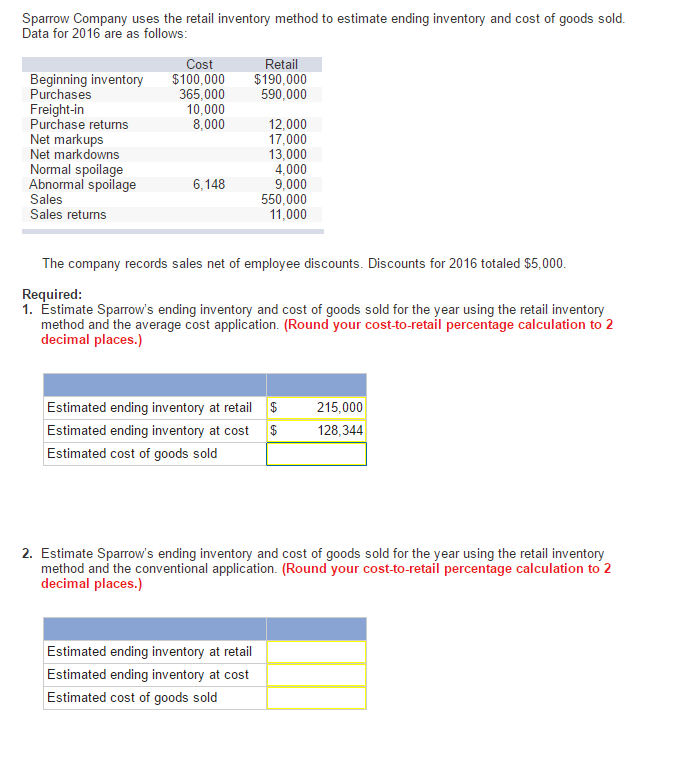
The consistency principle requires a company to adopt an accounting method and follow it consistently from one accounting period to another. Accountants record the ending inventory balance as a current asset on the balance sheet. Now you have an idea of how to navigate the average cost method, but what are the benefits involved? Moving-average (unit) cost is a method of calculating ending inventory cost.
Weighted average cost
- The main benefit of the average-cost method is its simplicity, particularly for companies that deal with large volumes of very similar items.
- The use of average costing method in perpetual inventory system is not common among companies.
- This average unit cost figure is then used to assign cost to each unit sold until a new purchase is made.
- We still have to pay $170 per unit to suppliers even though our costing is at $90.
- This stability can be advantageous for companies seeking to present steady financial performance.
Since AVCO uses an average cost of goods in inventory, rather than tracking individual units, it’s simpler to use than first-in, first-out (FIFO) or last-in, first-out (LIFO). The main highlight of the average cost method is its ability to keep inventory costs at stable levels when prices are fluctuating. We provide definitions, formulas, examples, expert advice and comparison charts to help you understand the concepts. The Average Cost Method assigns inventory costs using a weighted average approach, wherein the costs of production are added and divided by the number of items produced.
Average Cost Method: Definition and Formula With Example
This allows for greater flexibility in financial reporting, especially for businesses with cross-border operations. It facilitates a uniform approach to inventory valuation that can simplify consolidation processes for multinational corporations. As the weighted average is continually calculated, the perpetual inventory average cost method is sometimes referred to as the moving average cost method. Under the perpetual inventory system, inventory records are maintained continuously throughout the accounting period.
AVCO Perpetual
The total cost of the units, which is $19000, will be divided by the total number of units, 600. Since January 13 is our last transaction, let’s assume that no other transactions occurred during the month. Let’s foot the columns by adding the total costs under the Purchases and Cost of Goods Sold columns. The first step in finding the ending inventory value is to calculate the units of ending inventory. All three are equally valid, but one thing to keep in mind is that once a business chooses the method, it will need to remain consistent across all financial reports.

The Meta company is a trading company that purchases and sells a single product – product X. The company has the following record of sales and purchases of product X for the month of June 2013. Below is a graph depicting the actual price of inventory vs the computed average cost.
To approximate our cost of goods sold, let’s extend our moving average unit cost to at least five decimal places and round off the dollar amount to the nearest hundredths place. Always remember that the Inventory entry should present the running balances. Hence, our units on hand as of January 2 are 400 units (200 units from beginning inventory and 200 units recently purchased). First, calculate the total cost of purchases made during the entire period. In our sample data above, we show the total cost of purchases was $62,000. Then, add the total cost of purchases to the cost of beginning inventory to arrive at the cost of goods available for sale.
Let’s first enter our beginning inventory balances in the first line of the subsidiary ledger. The last purchase was made on 2 January so we need to calculate the average cost on that day. You could also calculate the cost of sales by adding up the inventory issue costs in the second column of the ending inventory calculation, which would also give the same answer. Once the value of ending inventory is found, the steps to calculate the cost of sales and the gross profit are quite simple. In the following examples, I explain the working of average cost calculation in a perpetual and a periodic system. One of the core aspects of U.S. generally accepted accounting principles (GAAP) is consistency.
In perpetual inventory system, we have to calculate the weighted average cost per unit before each sale transaction. The average cost method is beneficial for businesses with large volumes of similar items, as it reduces the complexity of tracking individual item costs. It is useful in industries like manufacturing and retail, where inventory turnover is high and prices fluctuate.
It calculates inventory cost by dividing the total cost of goods available for sale by the total number of units available, resulting in a uniform cost per unit. This cost is then applied to both the cost of goods sold and the ending inventory. The weighted average cost method accounting is a method of inventory valuation used to determine the cost of goods sold and ending inventory. Weighted average accounting assumes that units are valued at a weighted average cost per unit and applies this calculated average to the units sold and the units held in ending inventory. The average cost method computes inventory cost based on total cost of purchases divided by the number of goods purchased.
It is then followed by the count of inventory items at the end of the accounting duration. To get the figure of the cost of goods available for sale, you multiply the average price per item by the final inventory count. You can apply the same average 8 stylist secrets for healthy, shiny hair cost to the number of things you sell during the previous accounting period and still determine the cost of goods sold. This average cost is then applied to the units sold, as well as to the units remaining in inventory at the end of the period.
